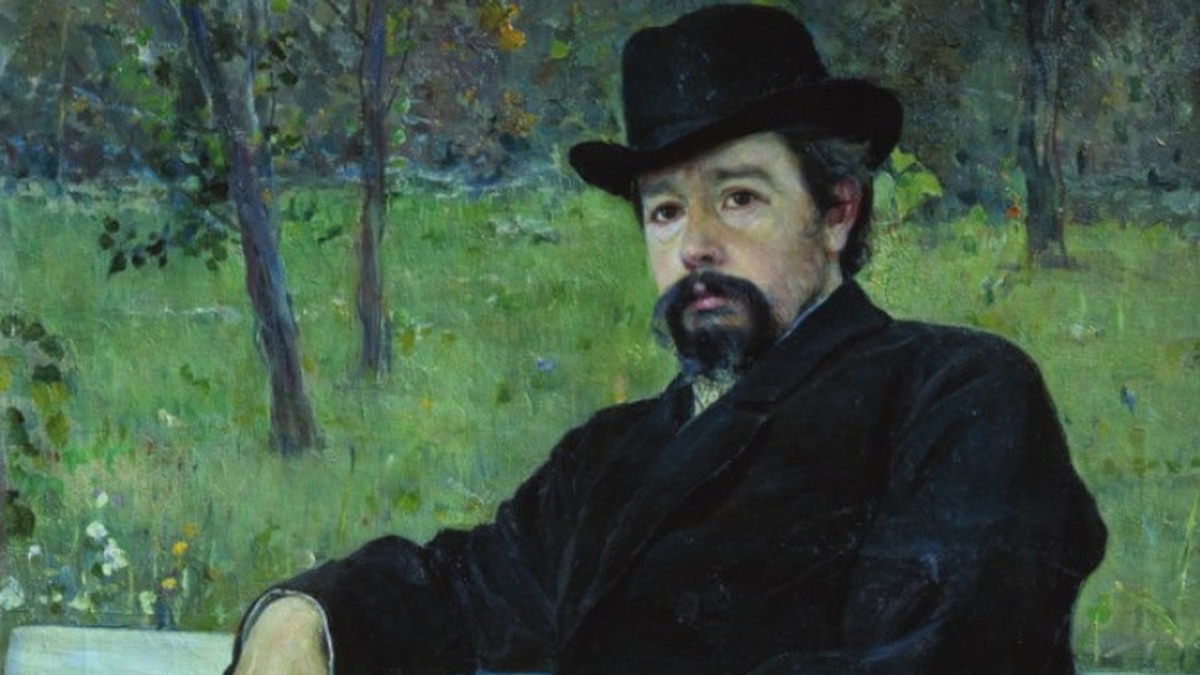

Mykola Yaroshenko was an outstanding artist, a master of genre painting, whose name is closely associated with Poltava. Mykola was born on December 13, 1846, in the family of a career officer. Since childhood, Mykola showed a love for painting, but his parents did not seem to attach much importance to it. They saw their son's future in a military career. The father, Olexandr, who was a retired major general, insisted that his son continue his path. At the age of 9, Mykola was sent to study at the Poltava Cadet Corps, and two years later he continued his studies in St. Petersburg. After graduating from the St. Michael's Artillery Academy, Mykola Yaroshenko was assigned to a cartridge factory, where he worked for over 20 years.
In 1892, he was promoted to the rank of major general. The damp climate of St. Petersburg provoked the artist's tuberculosis. Therefore, he and his wife moved to Kislovodsk. The estate of Mykola Yaroshenko was named “White Villa”. In 1892, after his retirement, the artist settled here permanently.
A few years later, Mykola went on a long journey. He visited Italy, Syria, and Egypt. From these countries, Yaroshenko brought a huge number of works - paintings, sketches, portraits.
Mykola Yaroshenko had no special artistic education. While still studying at military institutions, he attended the Drawing School, where the outstanding artist Ivan Kramskyi taught. For five years he was a free student at the St. Petersburg Academy of Arts. From 1875 Yaroshenko was an exhibitor, and from 1876 he was a member of the board of the Society of Traveling Exhibitions. The entire future fate of Mykola was connected with the Society. He became one of its ideological leaders and headed the Society after Kramskyi's death. Mykola Yaroshenko was called “the conscience of the Movers”.
Mykola repeatedly visited Poltava, where his mother continued to live. He had friendly relations with a circle of Poltava artists - Ivan Zaitsev, Hryhorii Miasoiedov, Vasyl Volkov, Leonid Pozen.
The artist's life ended abruptly on June 25, 1898. And it was not tuberculosis that brought Yaroshenko to his grave. He was 10 kilometers away from his estate and was working on a painting of a village, when it suddenly started to rain. In order not to get wet, he decided to run this distance. Those 10 kilometers were the last in the artist's life. Almost near home, he felt pain in his heart, and the next day he passed away. His heart could not withstand the load. Mykola was buried in Kislovodsk. A monument was erected on his grave, a bronze bust by Leonid Pozen.
The artist's widow, fulfilling her husband's will, bequeathed the collection of works by Mykola Yaroshenko to his hometown. In 1917, it was brought to Poltava. The collection included 100 paintings, 23 working albums of drawings, sculptures by Mykola Yaroshenko, and a rather significant collection of works by friends and colleagues from the Society of Traveling Exhibitions - Vasyl Poliov, Ivan Shyshkin, Illia Repin, Mykhailo Nesterov, Vasyl Maksymov, and others. Today, they form the basis of the collection of the Poltava Art Museum, two halls of which are directly dedicated to the works of our famous countryman, Mykola Yaroshenko.
In 1962, the former Dorozhna Street in Poltava was renamed in honor of the famous countryman.
To the news list